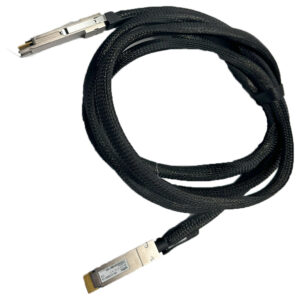Data centers have challenges upgrading to 400G. But as Deepak Chopra once said, “all great changes are preceded by chaos…” Rest assured: the best minds are working on it. Solving problems is what engineers do best.
Here’s five data center migration challenges with tips on resolving them.
1. Energy Consumption, Overheating
Power consumption is a key challenge when upgrading to higher data rates. Forecasts for data center electricity consumption are shocking. Some predict data center usage will account for 8-21% of total electricity demand by 2030. However, the latest analyses, which factor in data center improvements, are trending downwards, to 1-3% of global electricity use.
Upgrading to 400G compounds the problem. According to experts: “today’s ecosystem of 400G transceivers run on DSP (Digital Signal Processing) and are power-hungry….”
On a positive note, the fiber optics industry is finding solutions. According to Infinera.com and others, the latest advancements in coherent technology, digital signal processors (DSPs), and intelligent mechanical design have driven down power consumption by more than 90%.
Some industry solutions already out there:
- Analog chip signal processors drive down energy consumption and costs.
- Data centers are being strategically located in colder climates to ease cooling requirements.
Renewable energy sources are options to reduce burden on energy grids.
Tips
- Monitor your data floor’s cooling demands and power needs constantly to optimize efficiency.
- Make energy consumption part of your data center migration plan.
- Buy lower energy 400G fiber optics modules. Look for products with power-saving features.
2. Management of Cables
Cable management in data centers is also critical. When you upgrade equipment, you accumulate more cables. Finding a systematic way to store and manage all cables, from power cables to fiber optic wiring, is essential. Poor cable management can restrict air flow in small spaces and place unnecessary strain on data center cooling systems and computing equipment. It can also cause data center overheating, greater energy costs, and erode equipment reliability. Additionally, too many wires protruding is dangerous.
Tips:
- Use cable ties and a labeling scheme for effective fiber cable management
- Change the layout of cable runs
3. Excessive Link Flaps
Link flap is a condition where a communications link alternates between up and down states. Link flap can be caused by end station reboots, power-saving features, incorrect duplex configuration or marginal connections and signal integrity issues on the link.
While link flaps are not faults, when too many of them occur, they are often a symptom of a bigger problem that should be investigated.
Tips
- Check the switch configuration to see if link flaps are occurring due to switch configuration, a power-saving feature, or as part of the maintenance cycle.
- Check reported DDM transceiver values. Some switches include options to record DDM values in a log to help with troubleshooting.
- Investigate possible signal integrity issues. Verify optical power using a meter, perform loopback and other tests.
- Select and test transceivers, switches, and cables carefully to ensure you’re using ones intended to work with your equipment. Try switching them out if necessary.
4. Compatibility with Legacy Architecture
400G transceivers have adopted the 4-level pulse amplitude modulation (PAM4). But existing switch ports and transceivers may run on NRZ signaling at much lower speed and hence, aren’t interoperable with PAM4, making network breakout deployments much more challenging. Transceivers running on NRZ at 40G may not work when connected to 400G networks.
Also, some manufacturers try to cut costs and put out cheaper products. They don’t adhere to MSA standards, standards designed to ensure interoperability with other equipment.
5. Faulty Transceivers
400G transceivers are new to the market. But many vendors are using proprietary technology that don’t adhere to MSA standards. The transceivers they sell are unreliable, not always high quality, and may have compatibility and interoperability issues.
Some manufacturers find it hard to stay within the devices’ power budget which can result in overheating, fiber alignment challenges, packet loss, and optical distortions.
Tips:
- Look before you buy. Request samples to test. Review transceiver quality tests done by manufacturers.
- Prioritize vendor selection.
According to Charles Darwin, “It is not the strongest of the species that survive, nor the most intelligent, but the one most responsive to change.”
Vitex, based in northern New Jersey, has been providing high quality fiber products and solutions since 2003 to clients in data communications, networking, and other industries. Our staff of trained engineers offer US-based technical support and customized solutions. Reach out to us to jumpstart your next project.
Related Products


